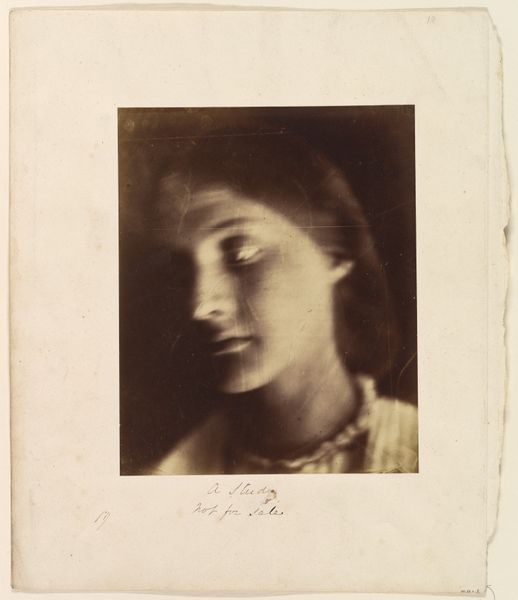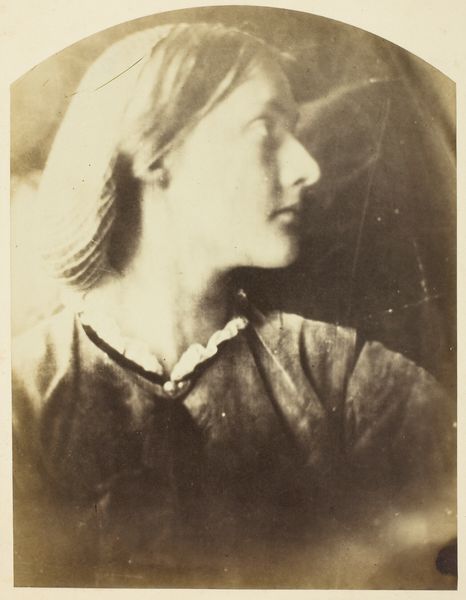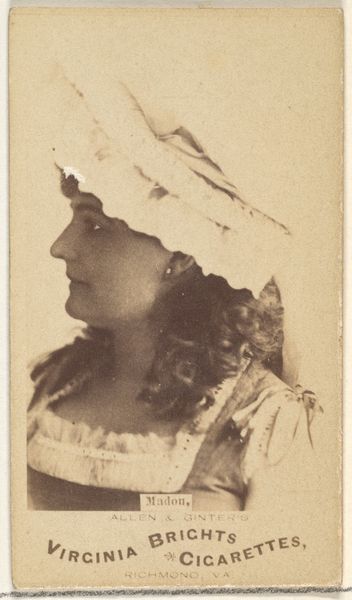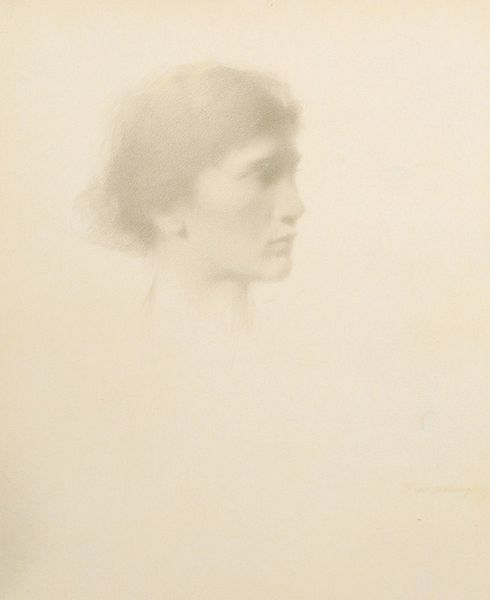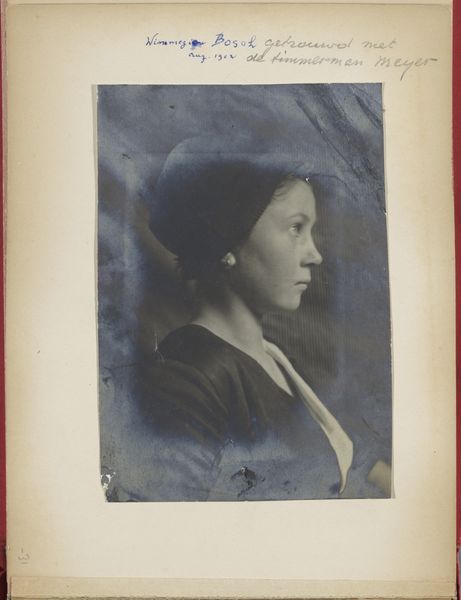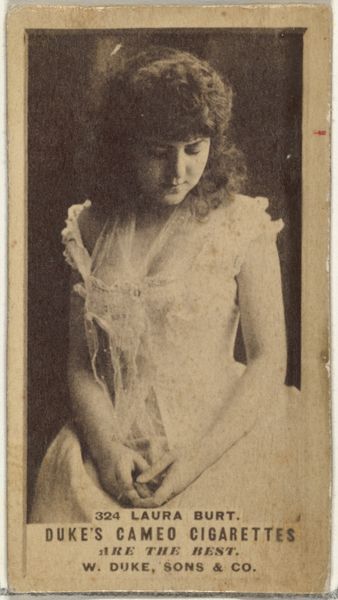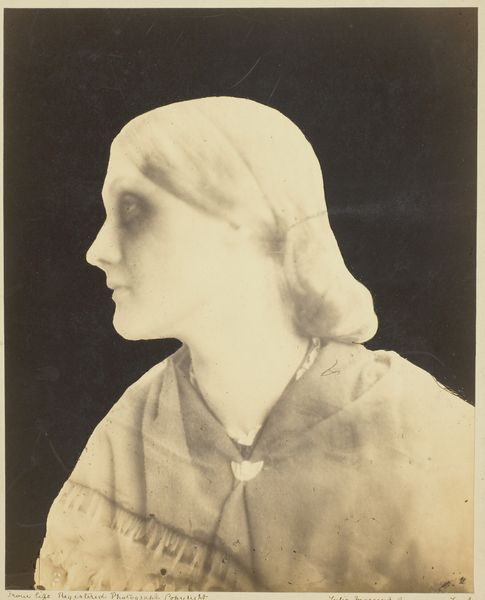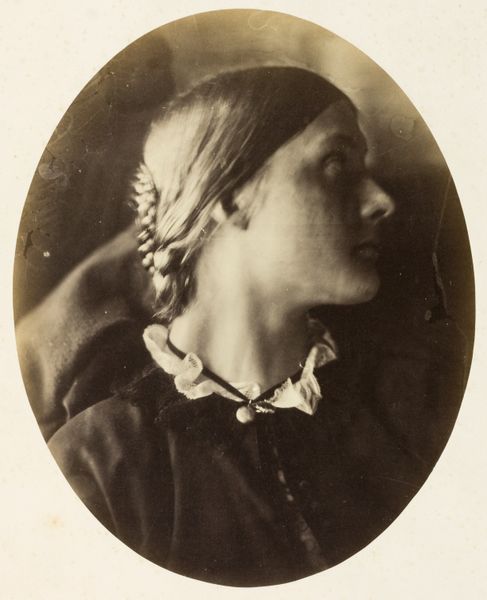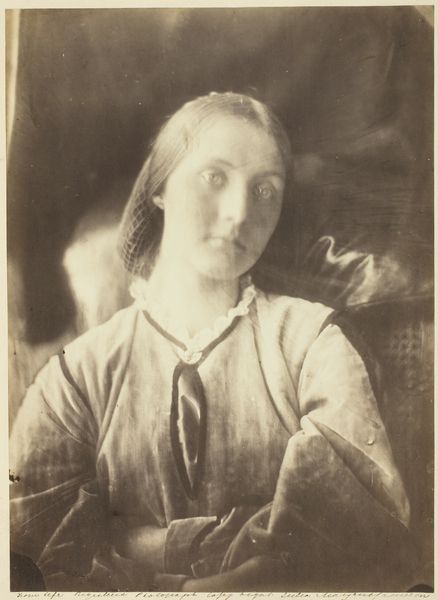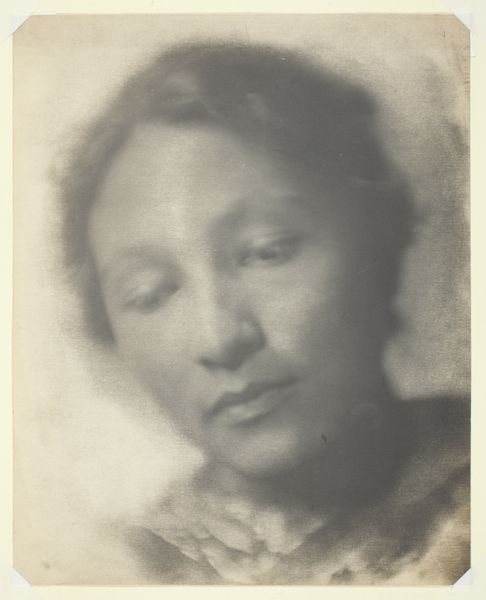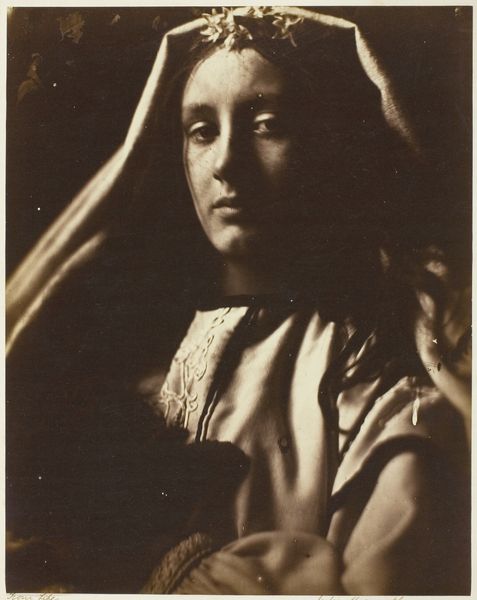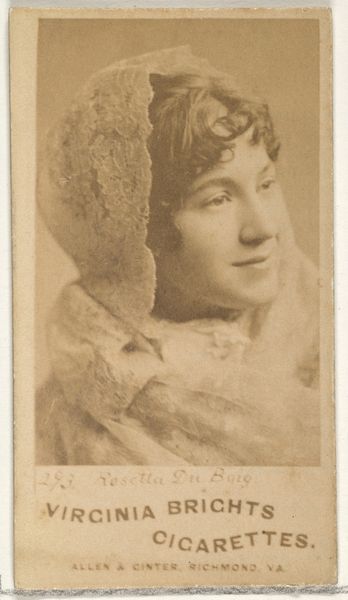
Dimensions: 24.7 × 20 cm (image/paper)
Copyright: Public Domain
Curator: There's a real softness to this image, isn’t there? A hazy quality, almost dreamlike. Editor: It's quite captivating, that delicate, out-of-focus effect. Julia Margaret Cameron created this gelatin-silver print, a portrait titled "Julia Jackson," sometime between 1864 and 1865. Curator: Cameron, a fascinating figure. She consciously rejected sharp focus, arguing that it was the essence of the subject, the inner beauty, that mattered most. This ethos resonated deeply with a Romantic sensibility that prized emotional intensity over clinical precision. The politics of the gaze become subverted. Editor: Absolutely, the soft focus guides your eye. Notice how the light delicately models the planes of Julia’s face. There’s a chiaroscuro effect at play, with deep shadows defining her jawline and cheekbones while a gentle light illuminates her forehead and nose. The formal composition enhances the sense of reverie. Curator: What’s really interesting, of course, is that Julia Jackson wasn’t just a model. She was the mother of Virginia Woolf. The photograph therefore attains an added significance, reflecting Woolf’s later interest in subjectivity, the flow of consciousness and the internal lives of women. One can speculate about Cameron's intentions—was she trying to depict something more than physical likeness? Was she, in a sense, capturing the nascent spirit of a future literary giant? Editor: It prompts us to consider the role of photography at the time. The silver print medium, even with its technical imperfections evident in the small scratches, communicates not stark realism but aspiration to High Art—portraiture as revelation. It's like a whispered secret, the light caressing her features... almost an evocation, not a description. Curator: Exactly. So this work makes us contemplate the connections between visual art, social context, and even literary history. It demonstrates how photographic portraits became a vehicle for cultural aspirations and the construction of social identities. Editor: And from a purely aesthetic viewpoint, it reveals the beauty found in intentional ambiguity and invites you, still today, to dream up a backstory yourself.
Comments
No comments
Be the first to comment and join the conversation on the ultimate creative platform.
